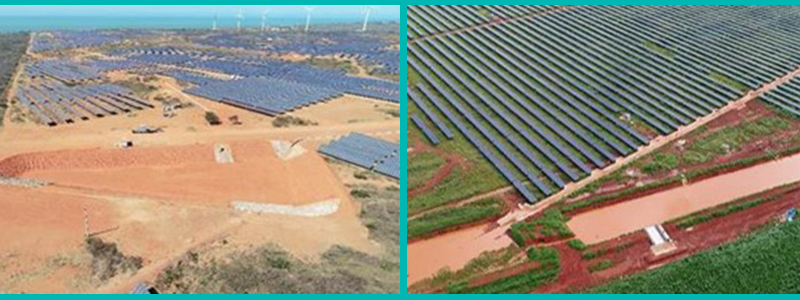Drainage projects in photovoltaic parks.

with the growing investment in projects and implementation of solar parks for diversification of energy matrices, the challenges also grow. Challenges is in relation to drainage and rainwater management.
So it is necessary to understand the action of water on the soil, the erosive potential of rainy event runoff and the impact inside and outside the parks. >
In addition to all hydrological study associated with the region of implantation, its topography and the contribution basins, the knowledge of local soil characteristics is of utmost importance, Rain percentage that will effectively drain, one of these main characteristics to be considered. It is the runoff coefficient (C), or Runoff, which quantifies this percentage (ratio between drained and precipitated volume).
know the soil type, its infiltration capacity and whether or not there will be the superficial vegetable layer for protection over the lifetime of parks, are essential factors for the Dimensioning of the capture, conduction and dissipation devices. The higher the surface protection and soil infiltration capacity, the less robust the devices will be. Otherwise, it will require greater complexity in sizing and choosing devices, such as wider and deepest channels, galleries and culverts and containment basins, sedimentation and amortization:

thus, in order to avoid erosion, sediment racing and material and environmental damage, very important to always evaluate the technical and financial impact of the correct sizing of the park drainage system Photovoltaic.
Snef Brasil has an engineering prepared to meet the demands of our customers, with experience and expertise acquired in over 40 years of power generation activities and projects that They total more than 2 GW, distributed among hydroelectric plants, small hydroelectric plants, thermoelectric plants, photovoltaic parks.
 Solutions
Solutions2024.06.26
Find out how Snef can help you enhance the efficiency of your plant!
We are excited to announce the acquisition of new machines and equipment to enhance our customers' plant efficiency! and guarantee that systems, components or installations are functioning correctly and in accordance with the established...
 Solutions
Solutions2021.02.10
CYBER CRIMES - A SITIATED WORLD
To avoid cybercrime, companies must structure their information security areas by reinforcing network and security monitoring.
 Solutions
Solutions2021.02.08
STRING BOX - PROTECTION FOR YOUR SOLAR PARK
String box is a protective equipment that isolates the photovoltaic energy production system in order to prevent electrical accidents.

